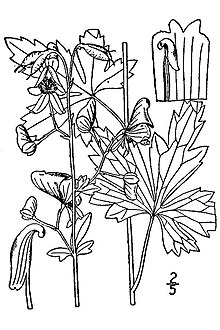en
names in breadcrumbs


Daughter tubers and connecting rhizomes are seldom present on herbarium specimens because they are easily dislodged during collection.
Available information suggests that Aconitum uncinatum is probably not one of the extremely toxic aconites (D. E. Brink 1982).
Aconitum uncinatum, commonly known as wild monkshood[2] or southern blue monkshood,[3] is a species of flowering plant in the buttercup family, Ranunculaceae. It grows in moist to wet habitats along streams and in woods and clearings.[2][4] It grows in the eastern United States in the Appalachian Mountains, on the Piedmont, and on the upper Atlantic Coastal Plain.[4]
The roots and seeds contain alkaloids, which are most poisonous before flowering. The plant has been used to make medicine to treat neuralgia and sciatica.[5]
Aconitum uncinatum, commonly known as wild monkshood or southern blue monkshood, is a species of flowering plant in the buttercup family, Ranunculaceae. It grows in moist to wet habitats along streams and in woods and clearings. It grows in the eastern United States in the Appalachian Mountains, on the Piedmont, and on the upper Atlantic Coastal Plain.
 Illustration of Aconitum uncinatum
Illustration of Aconitum uncinatum